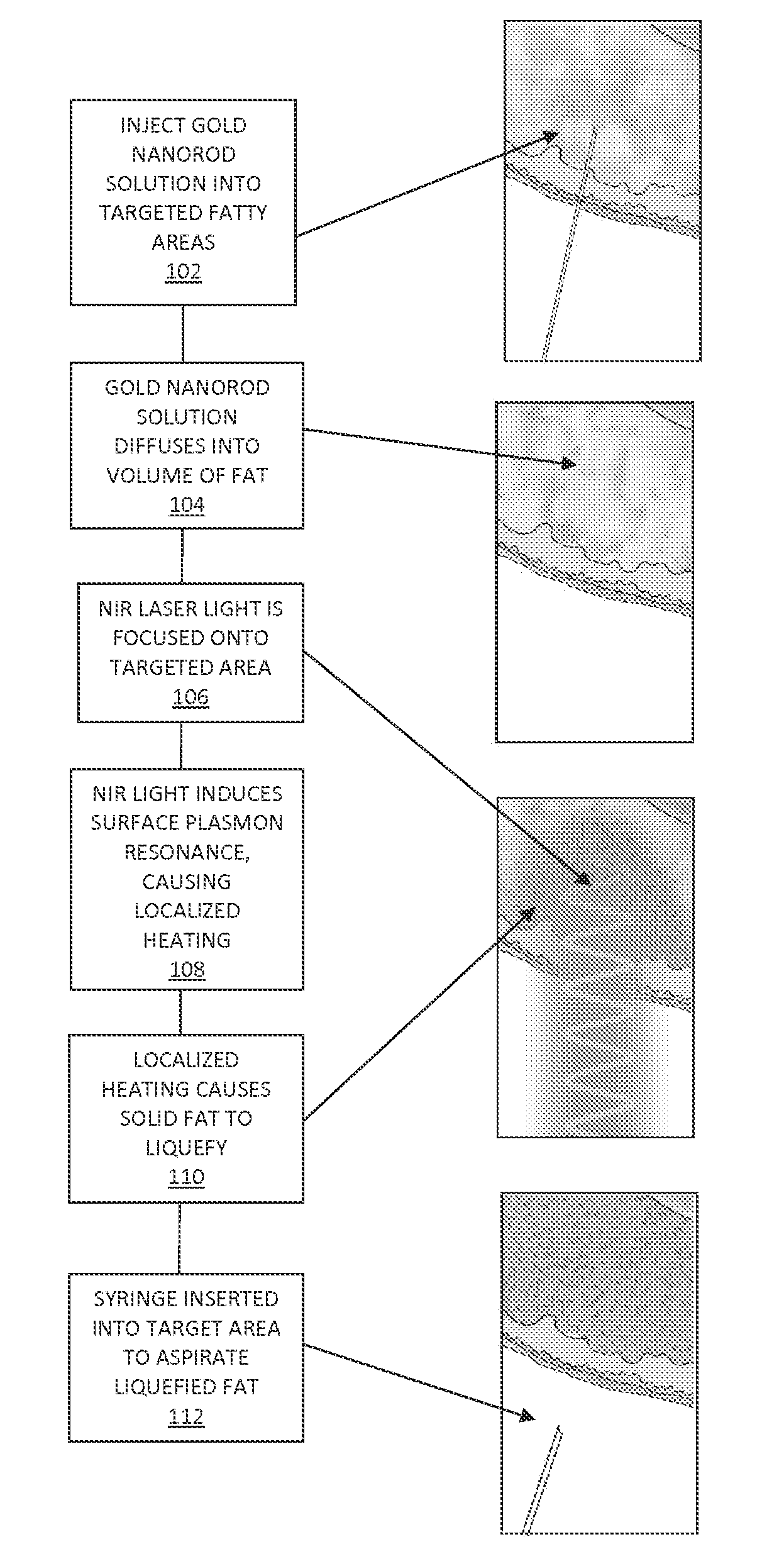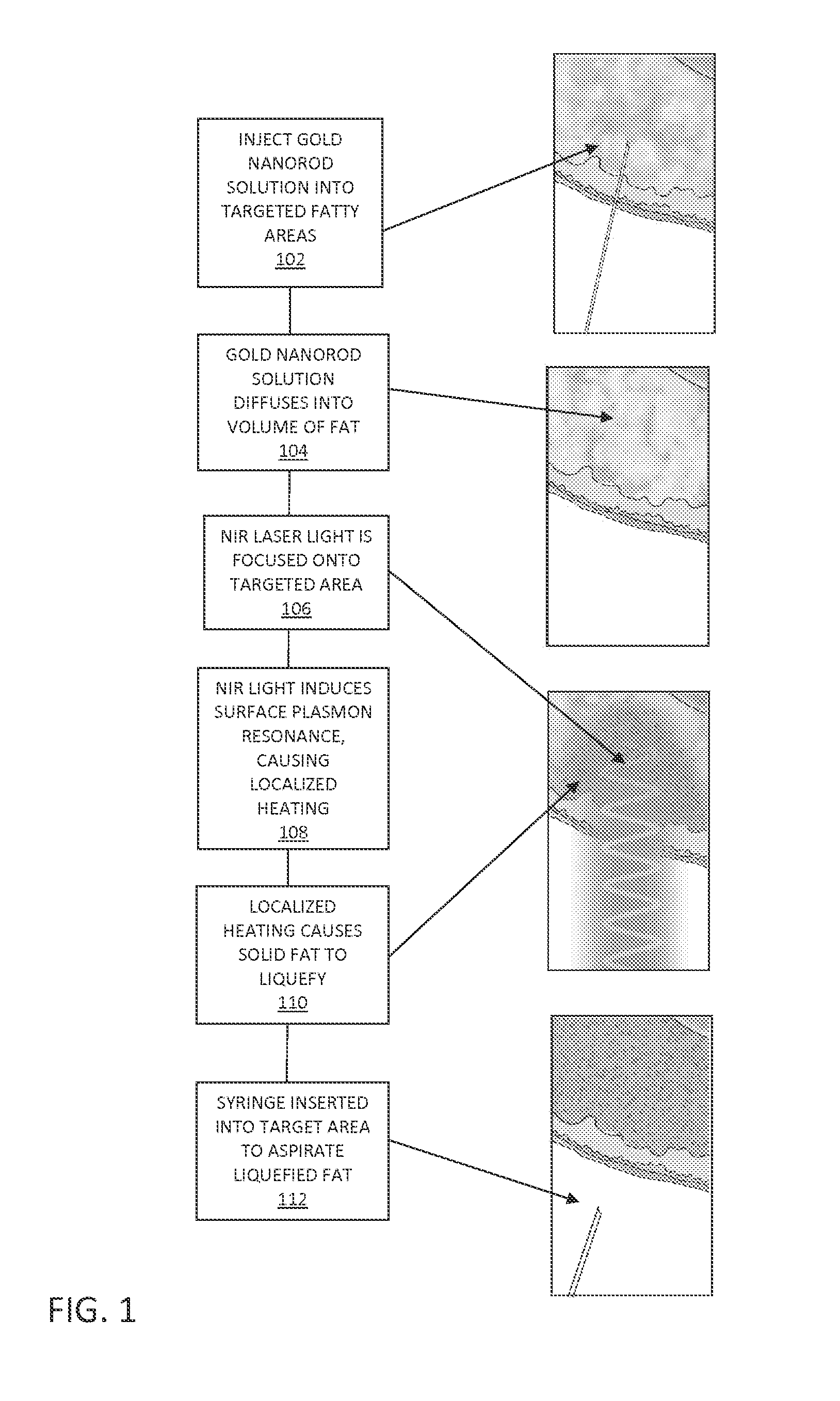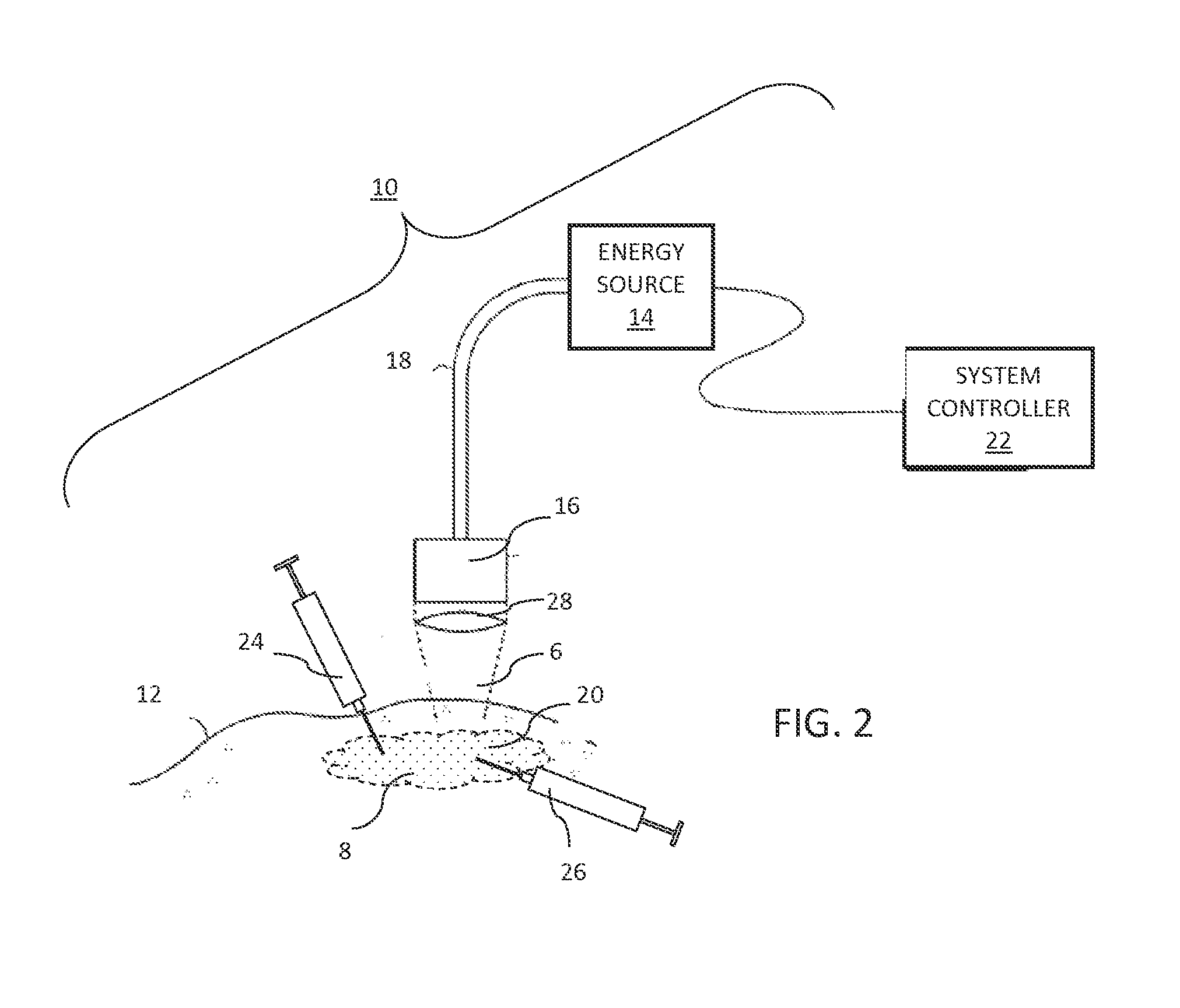Fine spatiotemporal control of thermolysis and lipolysis using nir light
a spatiotemporal control and thermolysis technology, applied in the field of fine spatiotemporal control of thermolysis and lipolysis using nir light, can solve the problems of causing the same or worse mechanical trauma to the tissues, affecting the effect of lipolysis, so as to eliminate unnecessary damage to blood vessels and nerves, reduce the effect of postoperative pain and fat melting with eas
- Summary
- Abstract
- Description
- Claims
- Application Information
AI Technical Summary
Benefits of technology
Problems solved by technology
Method used
Image
Examples
example 1
Photothermal Melting of Butter
[0032]To demonstrate the selective photothermal melting of fat, we performed experiments on a ˜2 mm layer of butter sandwiched between two slides separated by a silicone spacer small. Gold nanorods (GNRs) were procured from Nanopartz™, specifically “Ntracker™ for in vivo Therapeutics” gold nanorods coated in a proprietary dense layer of hydrophilic polymers, with 10 nm axial diameter and 42 nm length. According to information provided by Nanopartz, at this aspect ratio, the plasmon absorption peaks are at 817 nm and 512 nm. Laser heating was conducted on butter samples with and without GNRs using an unfocused (˜2 mm diameter) 800 nm beam from a Ti-Sapphire (100 fs, 80 MHz) laser. The GNR-butter samples were prepared from a mixture of 10 μL of 3×1012 GNR / mL with ˜50 mg of butter. Melting was monitored by visual inspection.
[0033]The melting point of butter is 32-38° C. and its specific heat is ˜5 joules / g° C. This means that with the ˜2 mm diameter beam a...
example 2
Photothermal Melting of Meat and Fat
[0037]Testing was also performed on bacon samples to compare the heating behavior in fat versus meat. We added 10 μL of 3×1012 GNR / mL in water onto the fatty sections of the bacon and illuminated the treated sections with a ˜2 mm diameter 800 nm beam at 2.5 W power. Melting of the GNR-injected fat was observed after 45 sec in the volume traversed by the laser beam where GNRs were present. Illumination was maintained for a total of 1.5 min to further melt the fat and determine whether charring can occur when high temperatures are attained. As shown in FIG. 6A, charring was observed. The melted fat (grease) became so hot that it splattered around the fat sample, indicated by the arrows in the figure. Control experiments on similarly irradiated non-GNR fat showed no melting (FIG. 6B). After irradiation, the fat had the same appearance as non-irradiated samples. The irradiated meat sections without GNRs were similarly unaffected (FIG. 6C). These resul...
PUM
 Login to View More
Login to View More Abstract
Description
Claims
Application Information
 Login to View More
Login to View More - R&D
- Intellectual Property
- Life Sciences
- Materials
- Tech Scout
- Unparalleled Data Quality
- Higher Quality Content
- 60% Fewer Hallucinations
Browse by: Latest US Patents, China's latest patents, Technical Efficacy Thesaurus, Application Domain, Technology Topic, Popular Technical Reports.
© 2025 PatSnap. All rights reserved.Legal|Privacy policy|Modern Slavery Act Transparency Statement|Sitemap|About US| Contact US: help@patsnap.com



